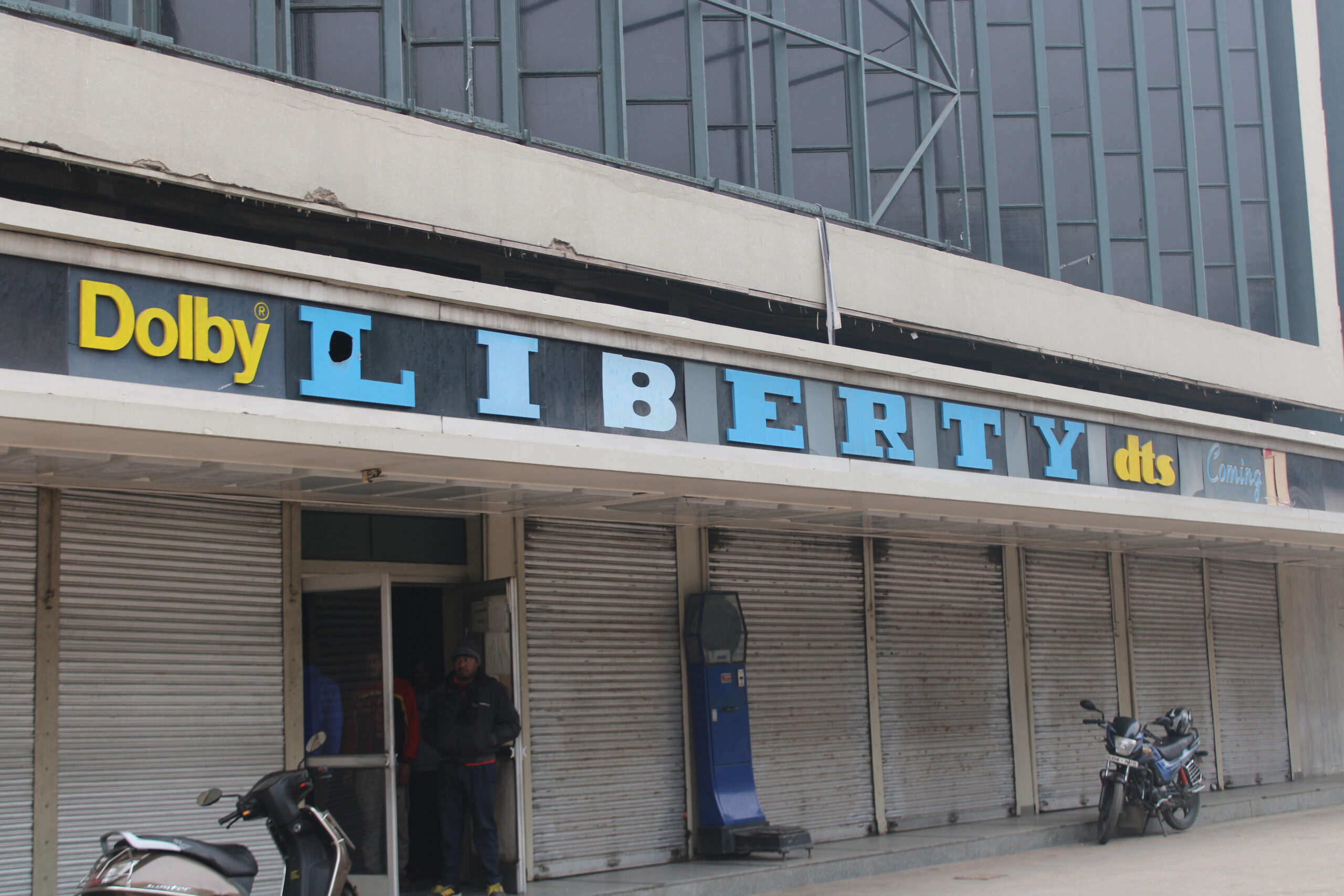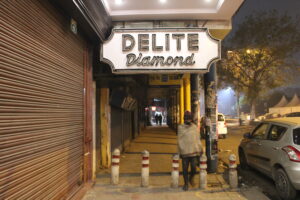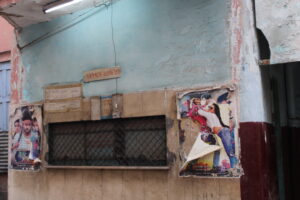Delhi’s iconic single-screen cinemas bite dust in the dark

At Karol Bagh’s iconic landmark, Liberty Cinema, the doors are shut and the lights are out since the pandemic-induced lockdown (MIG Photos/Nikita Rawat))
Delhi’s iconic Regal Cinema at Connaught Place basked in the glory days of single-screen cinema halls in the capital city. Built in 1932, Regal premiered the classic Gone with the Wind in India. For the first show of his new releases that he attended in person, film mogul Raj Kapoor’s first choice would always be Regal. The then Prime Minister Jawahar Lal Nehru also used to see screenings of select films with his entire Cabinet. For long, Regal had enjoyed the top spot among all the cinema halls.
But in 2017, Regal shut its doors due to low footfall. However, it still made a lavish exit by screening Mera Naam Joker and Sangam on its last days. Regal tried to keep up with the changing times by screening licentious movies but did not have enough capital to invest in new technology. Only its royal status in the cinema history gave it a lifeline for all those years. The Regal building stands as a heritage structure in Connaught Place today, but it might stage a comeback soon to the world of glamour as Regal’s owner reportedly plans to convert it into a multiplex.
Emergence of PVR
The dawn of multiplexes with PVR in India marked the tipping point for single screen cinema theatres. When the first PVR was opened in Saket, in south Delhi in 1997, people waited in long queues to catch a glimpse of how a multiplex looks from inside! Over the years, as multiplexes expanded their footprint across key cities, single screen cinemas began to fold one after other.

While the multiplex, Delite Cinema is functioning at 50 pc capacity, its second screen at Delite Diamond is shut (MIG Photos)
Today, the few remaining single-screen cinemas struggle to stay afloat. According to Statista, an online statistics firm, while there were only 925 multiplex screens across India in 2009, the number rose to 3200 in 2019. The number of single screens has tumbled correspondingly.
Liberty Cinema at Karol Bagh, Moti Cinema at Chandni Chowk, Ritz Cinema at Kashmere Gate and Delite Cinema at Delhi Gate were among the few others celebrated halls in Central Delhi. They were big names among the single screen cinema halls.
Except Moti, the other three were refurbished about a decade ago, with new sound systems and better ambience to allow them to continue in the market. However, the forced closure of cinemas for a large part of 2020 hit them hard and they are reluctant to reopen the cinemas in view of the new norms put in place by the government.
Pandemic-induced intermission
At Karol Bagh’s iconic landmark, Liberty Cinema, the doors are shut and the lights are out since the pandemic-induced lockdown. A guard still stands near the main entrance as employees work on the floor above. “We don’t have any big movies lined up right now. That’s why we are not opening up. Moreover, the public is hesitant to come here due to the virus. However, the business was better before the lockdown. Even in the first two months of 2020, the crowd depended on movies. On days of a blockbuster movie in 2019 like Dream Girl, Super 30 and Kabir Singh, we used to have a full house,” says YL Singh, an accountant at Liberty Cinema.
Liberty does not intend to open its doors to the public at the current 50 pc sitting capacity mandated by the government protocols. “We would only open at 100 pc capacity once the government allows so or if a film is released under a big banner. If KGF (upcoming movie) suits our terms and conditions, we would surely open up,” adds Singh.

Moti Cinema in Chandni Chowk is still shut as it does not have the capital to run movies at 50 pc capacity (MIG Photos)
A few kilometres away, Moti Cinema still stands tall in front of the Red Fort. Only its doors remain firmly shut. Posters of Bhojpuri movies have remained on the walls from the era before the pandemic. Before it was hit by the lockdown, Moti was running B-grade Bollywood and some Bhojpuri movies to compete in the market. But the lockdown has forced it shut. A guard roams around in the front yard to patrol the premises from the absent moviegoers. At Abhishek Cineplex, located a few metres away from Moti, the stairs leading up to the hall function as godowns for the neighbouring shopkeepers.
Ritz Cinema at Kashmere Gate is another icon of the cinema world in Delhi. In the pre-Independence period, it used to be a posh hangout for the British elites. Before the Connaught Place gained its social charm, Kashmere Gate was a popular destination in the walled city for leisure.
However, when the centre of gravity of the Capital shifted to Connaught Place, Ritz lost its prima donna status and with the arrival of multiplexes, it simply closed down, in 2009, before resurrecting itself in 2012. To be at par with multiplexes, Ritz was renovated with modern projection, sound system and air-conditioning. Today it remains shut.
Today, Ritz management is unsure of re-opening due to the high cost of opening and low footfall. “With all the SoPs in place, sanitisation and 50 pc sitting capacity, one cannot expect Ritz to open its doors to the public. They do not have money for these expenses,” says a local stall owner, who has been running his stall outside Ritz for the past 10 years.
Delite Cinema at Delhi Gate also survived the multiplex blitzkrieg by following the footsteps of Ritz. About two decades ago, it added another screen as it had space for construction. After the cinemas was allowed to reopen, Delite has resumed operations only on one screen, due to the low numbers of cinegoers.
While today, the gradual demise of single-screen cinemas is inevitable, their legacy in India’s cinema history is etched in bright, golden letters. Nevertheless, multiplexes have certainly revolutionised the movie experience and continue to attract immense audience, despite the threat they face from the emerging OTTs. In the words of the Greek philosopher, Heraclitus, “Nothing is permanent except change.”









